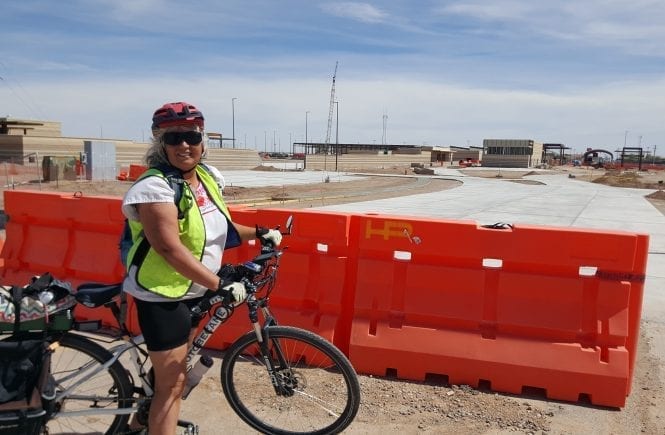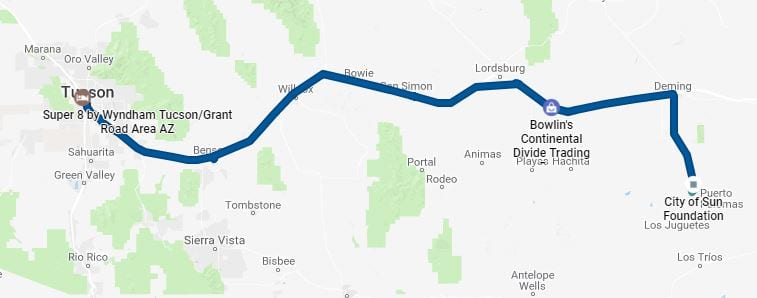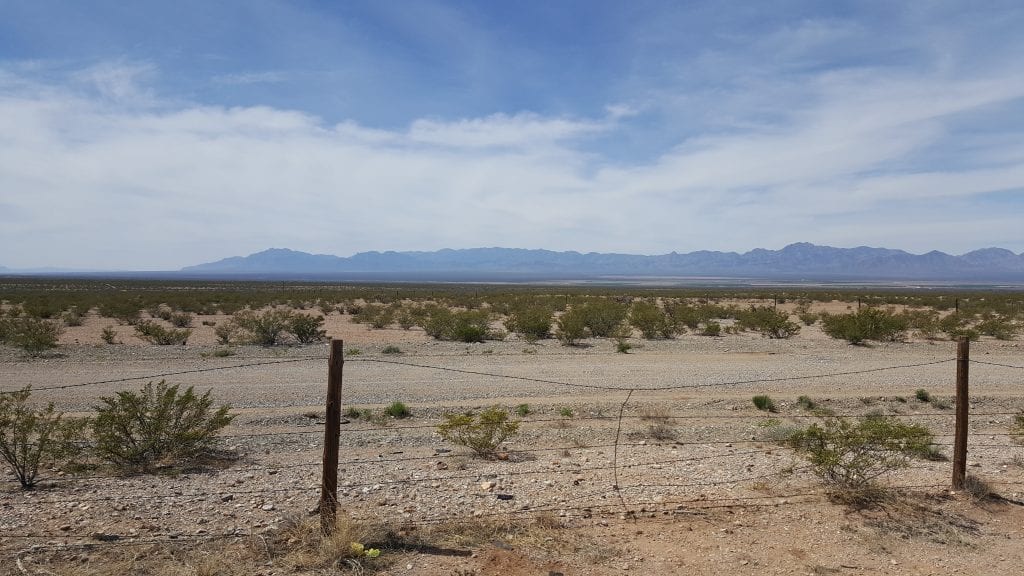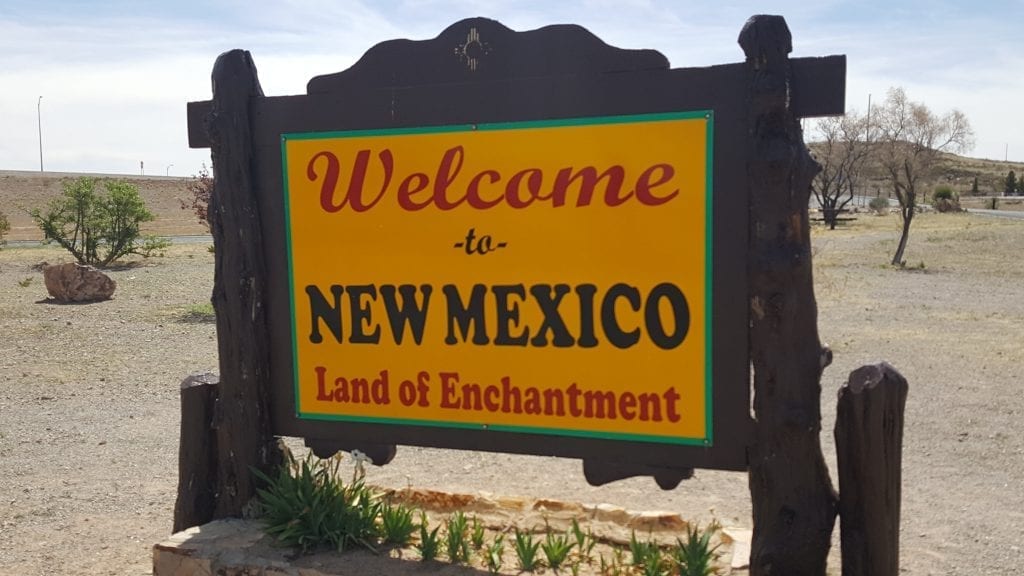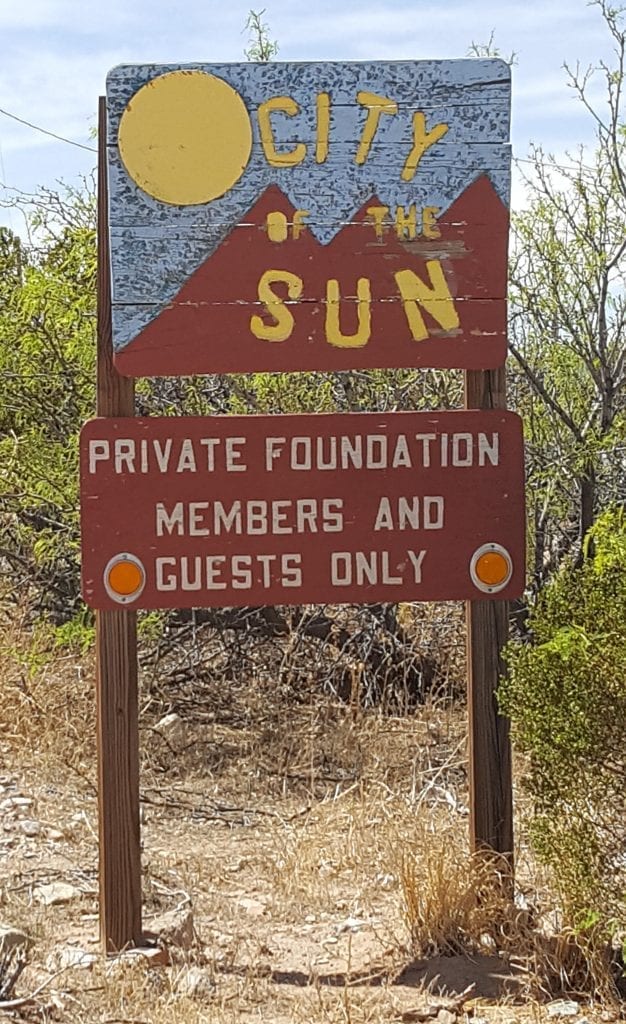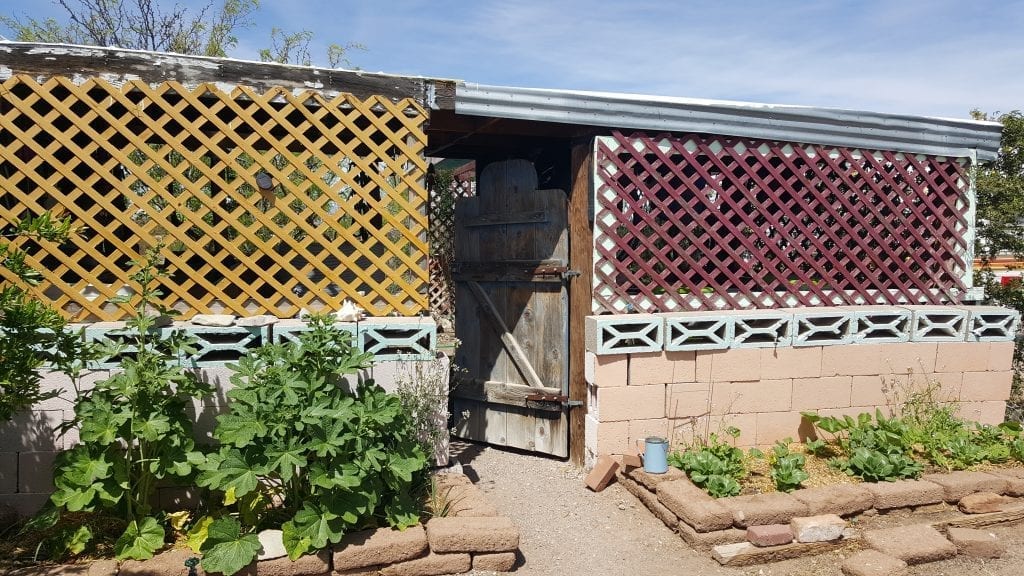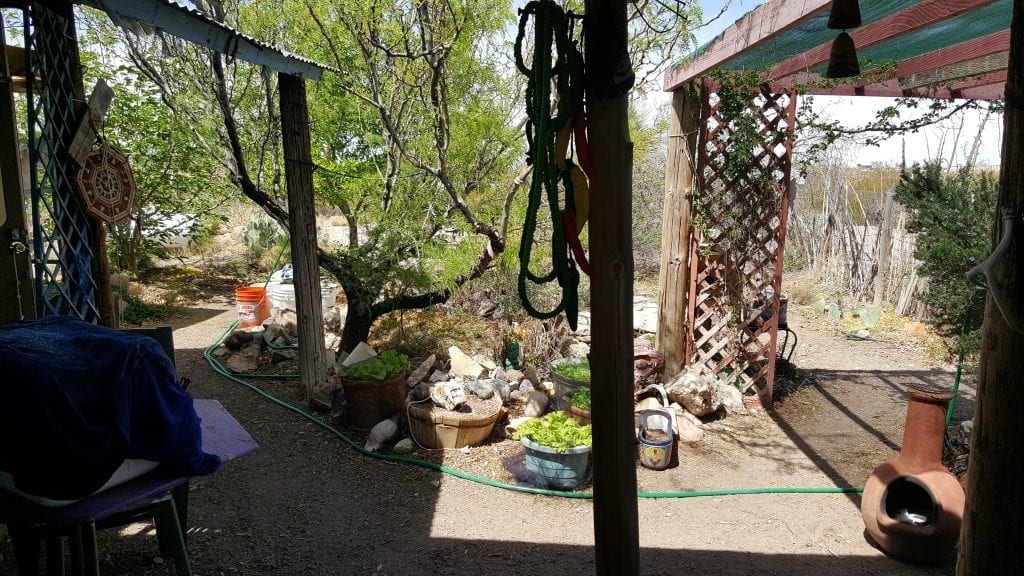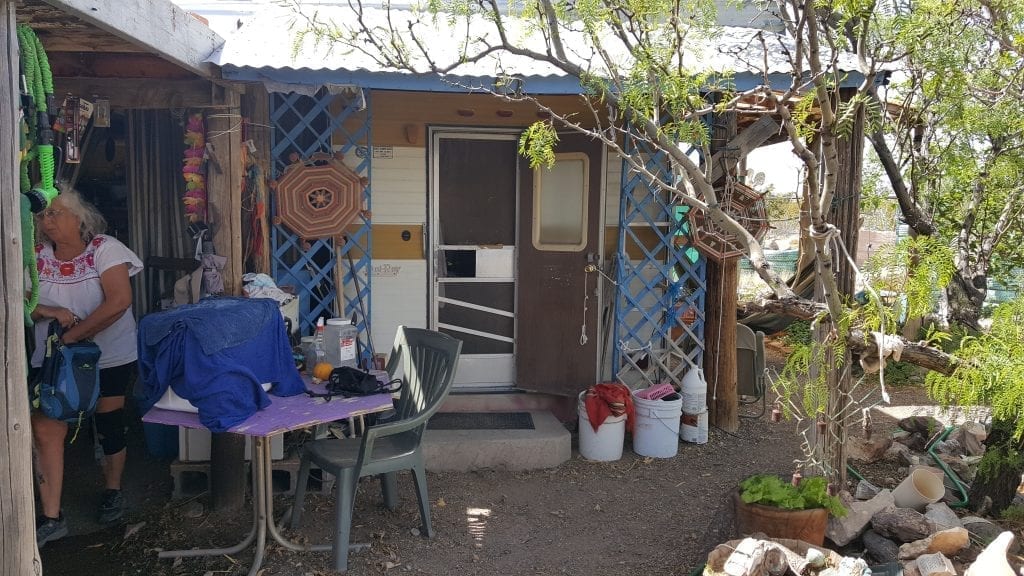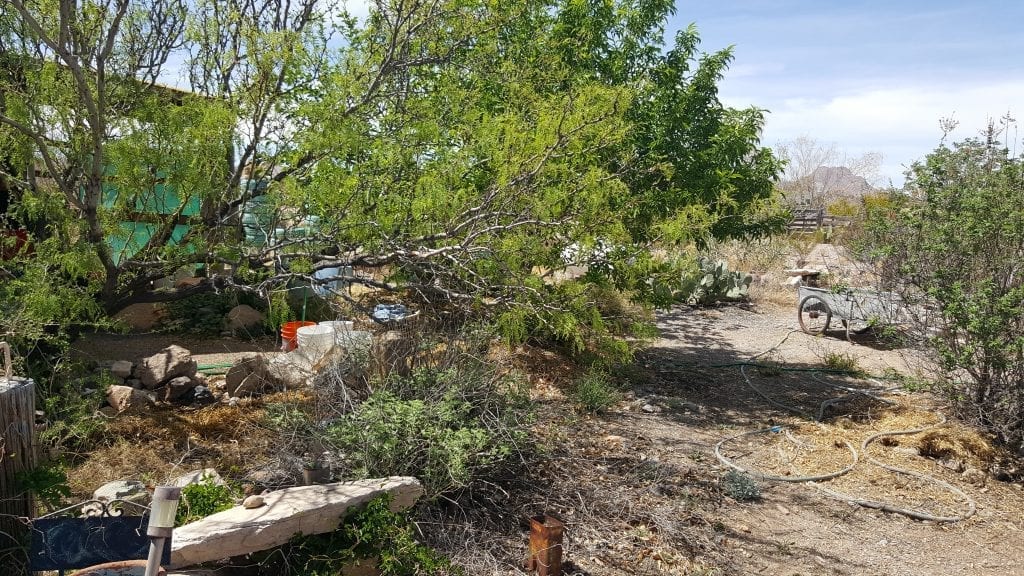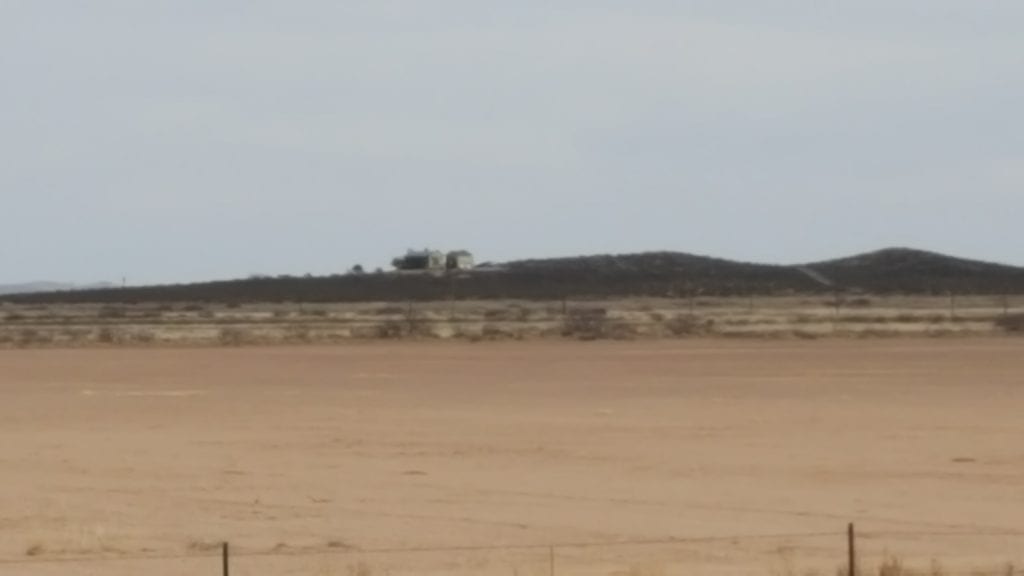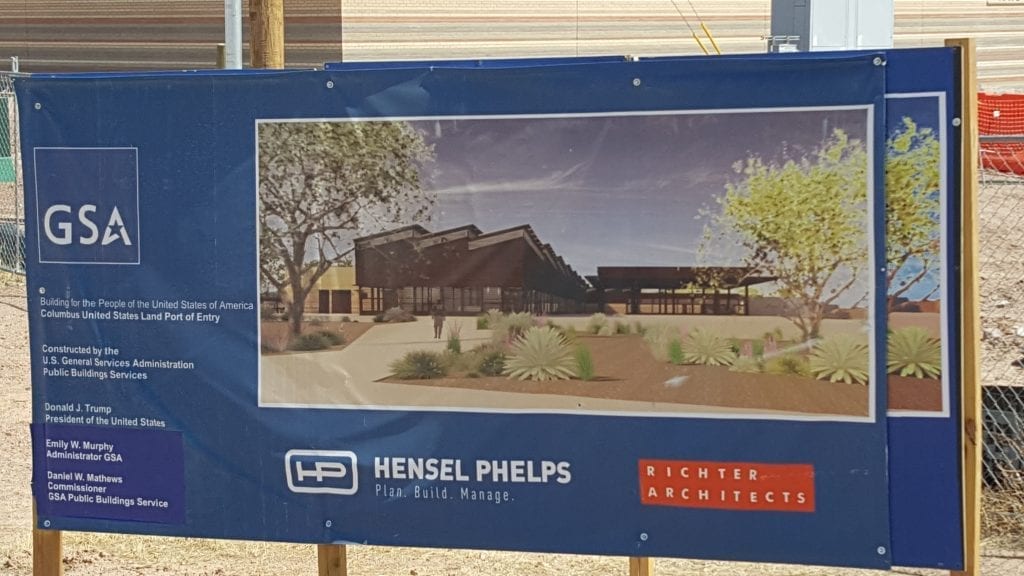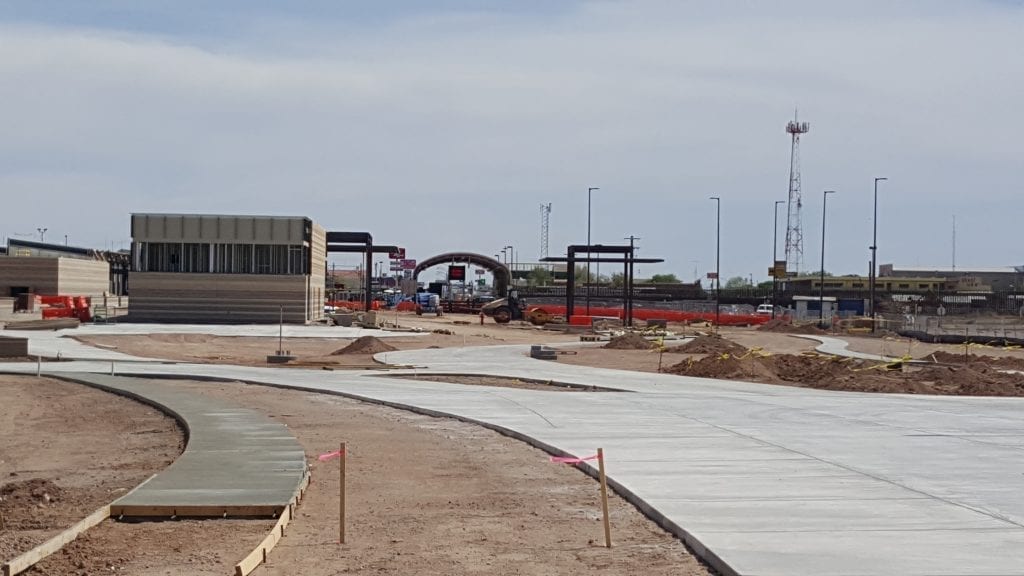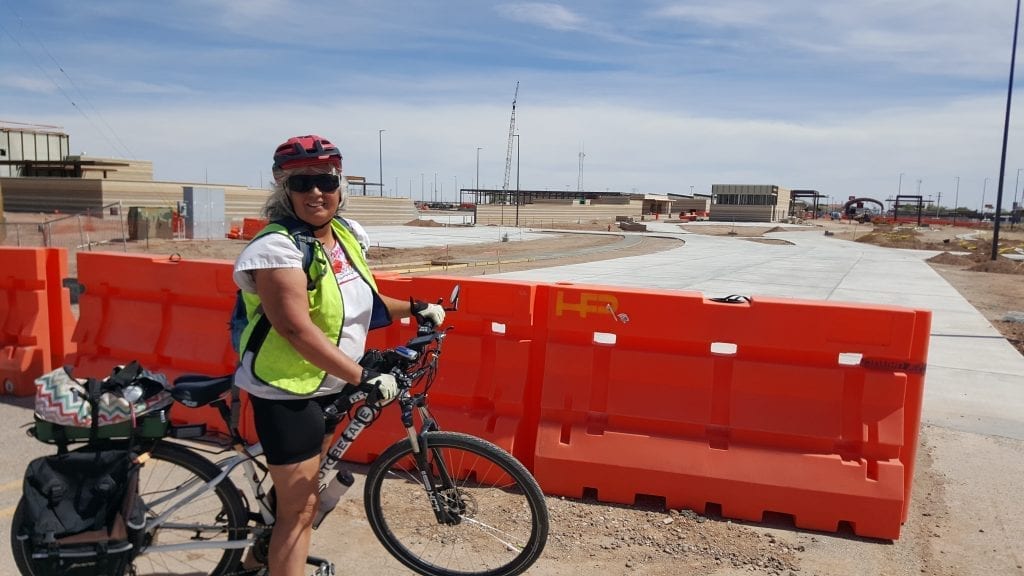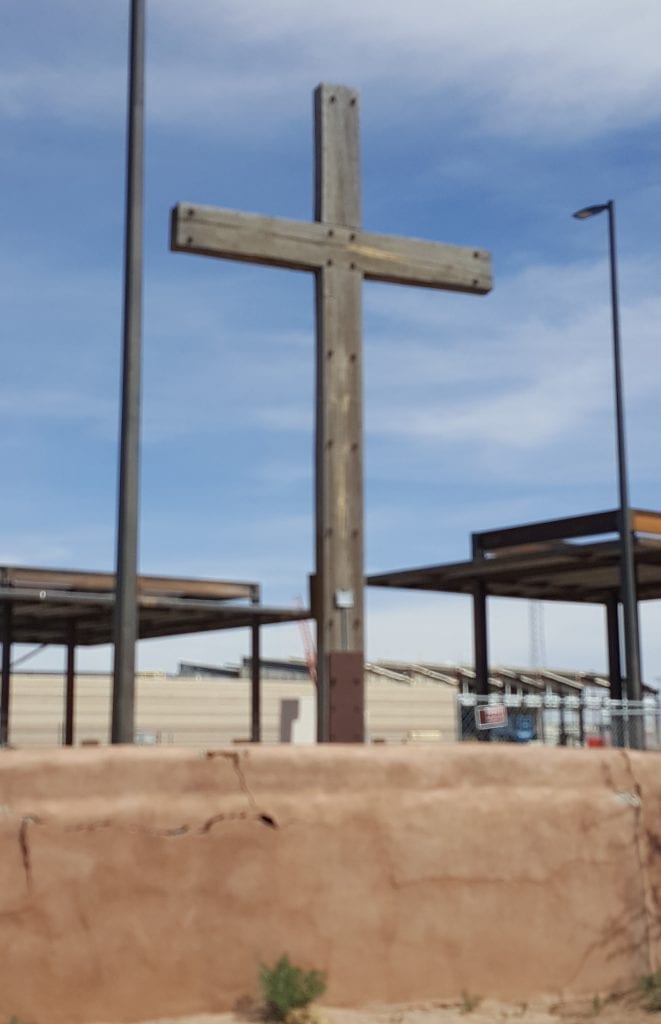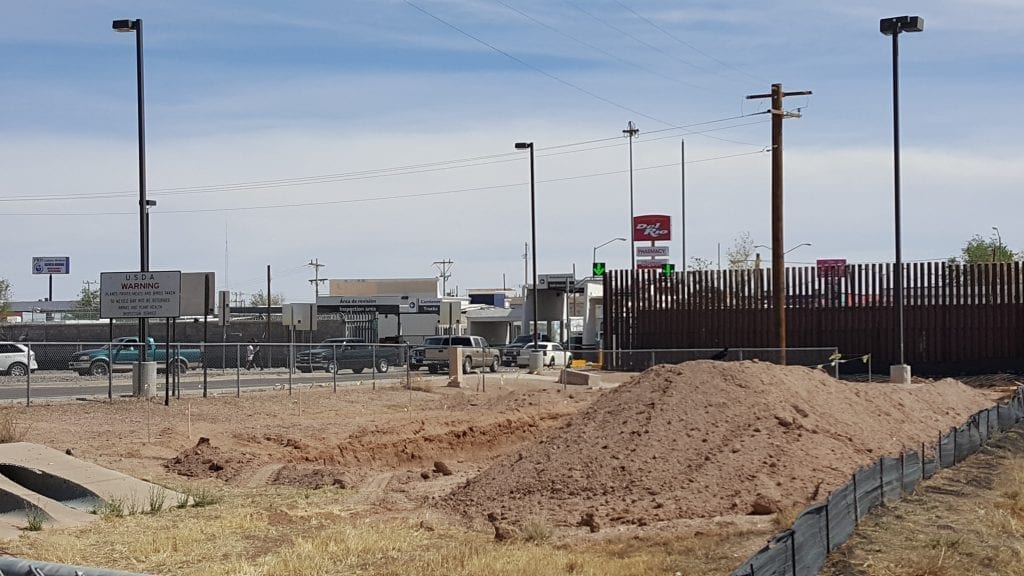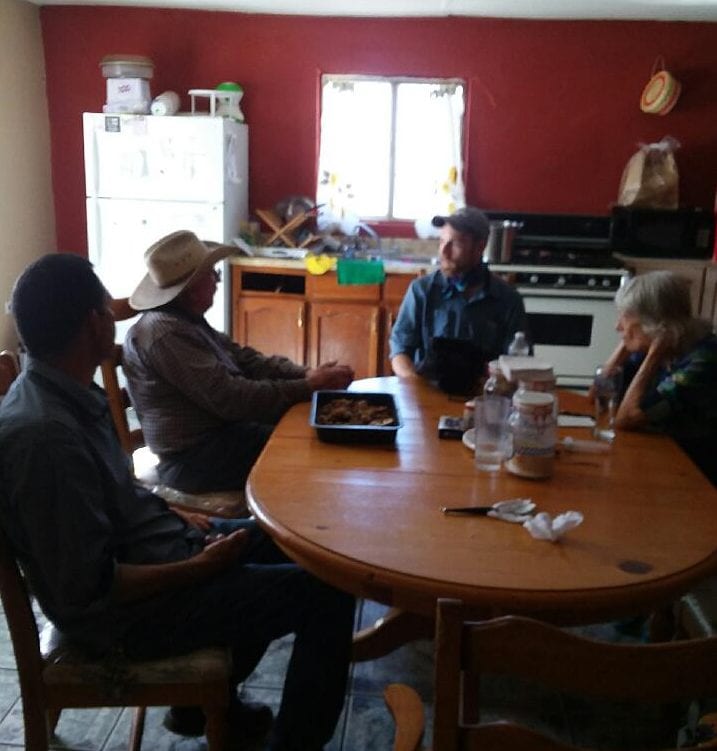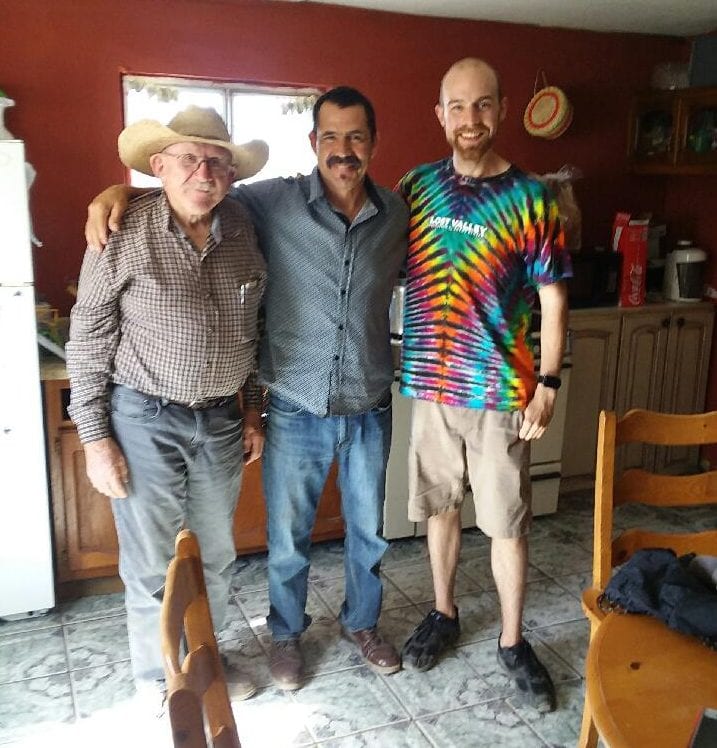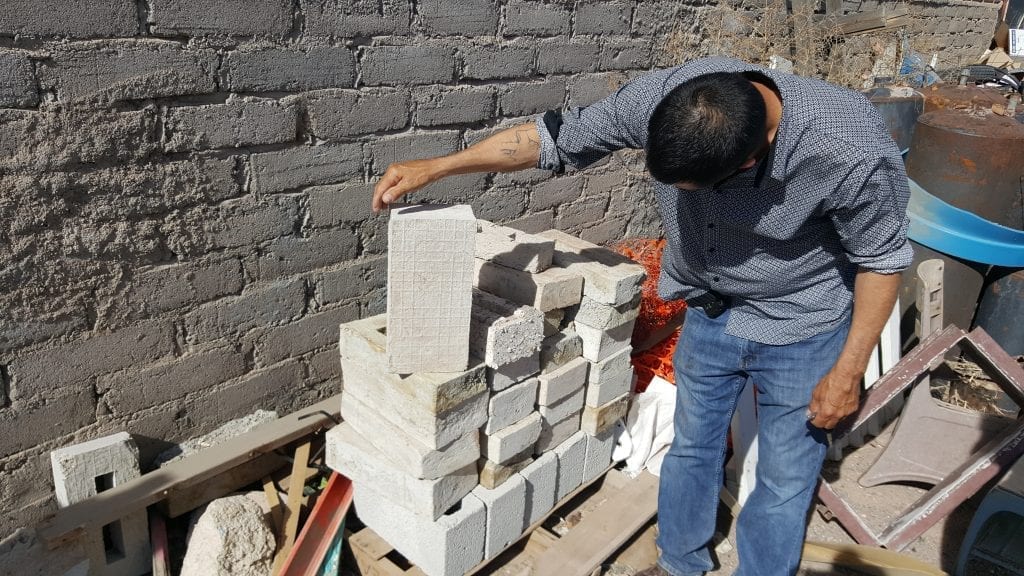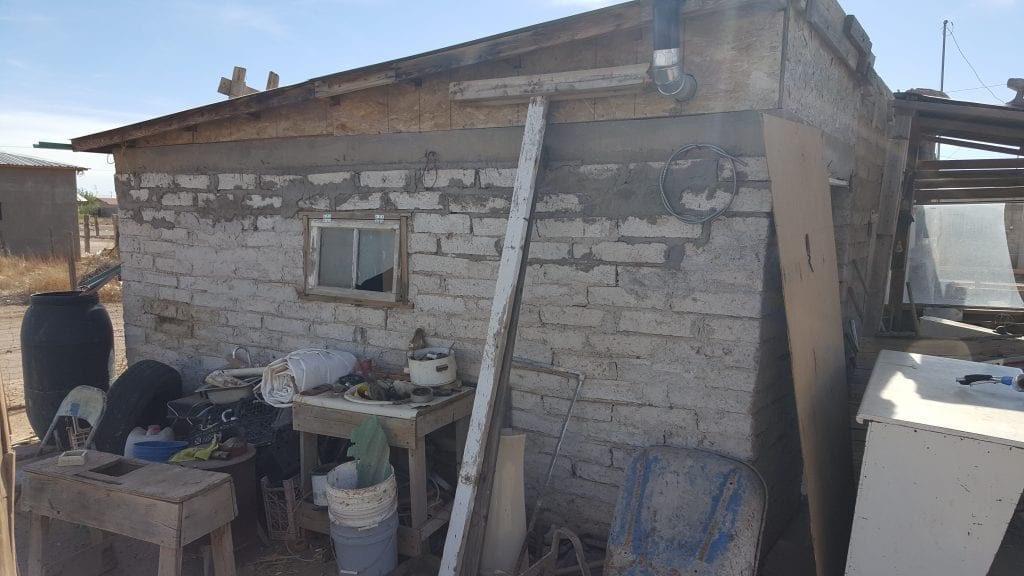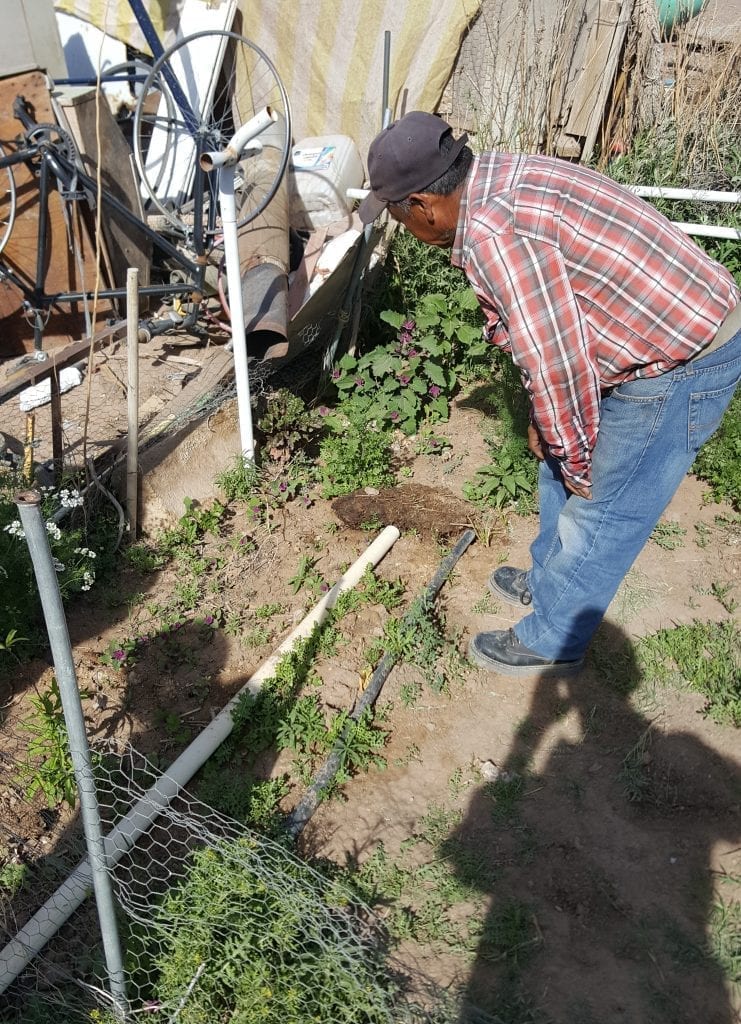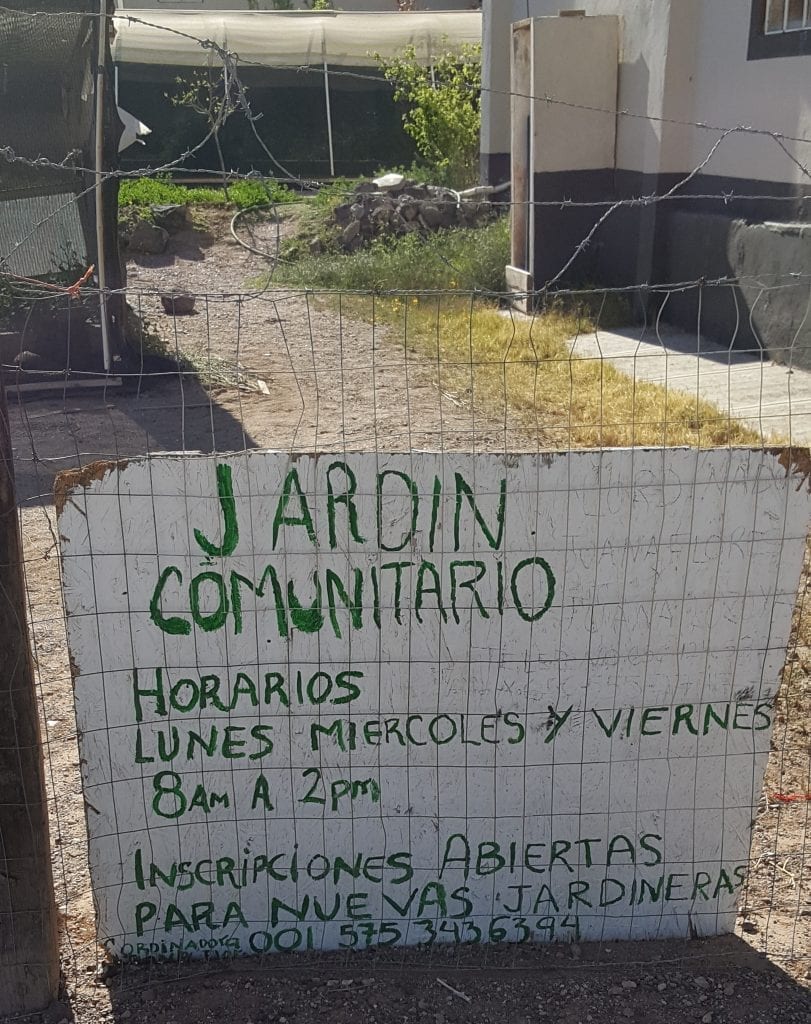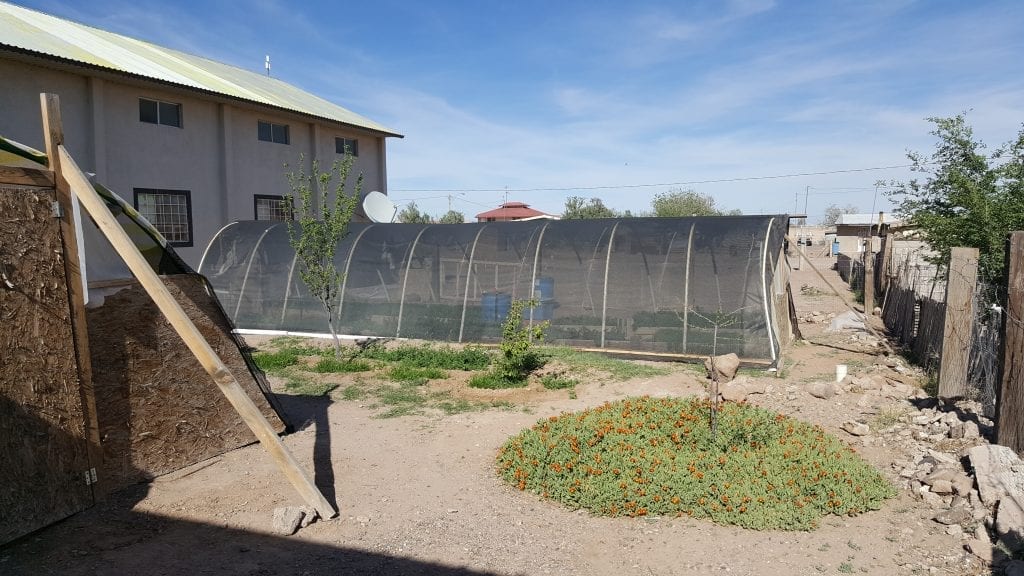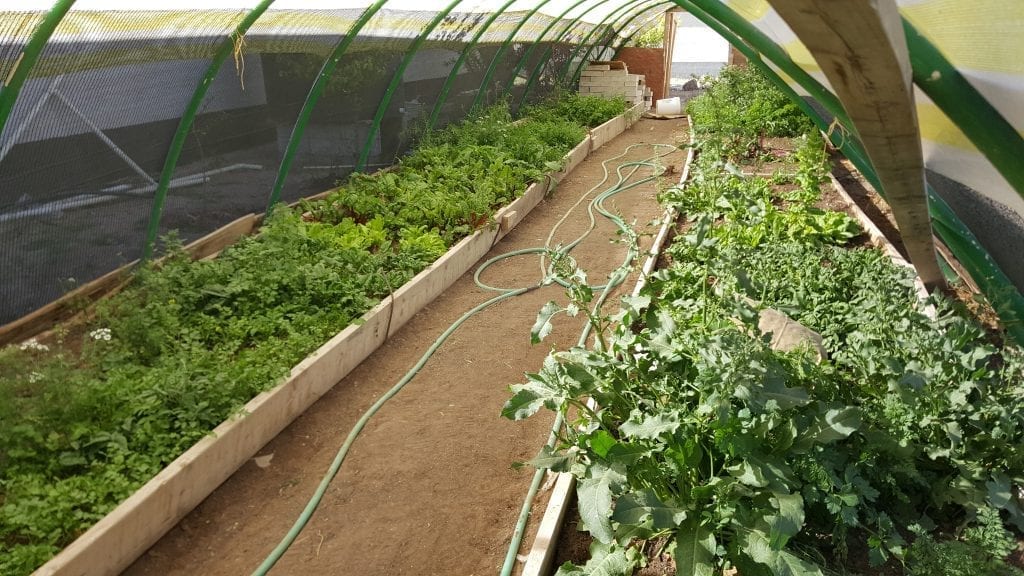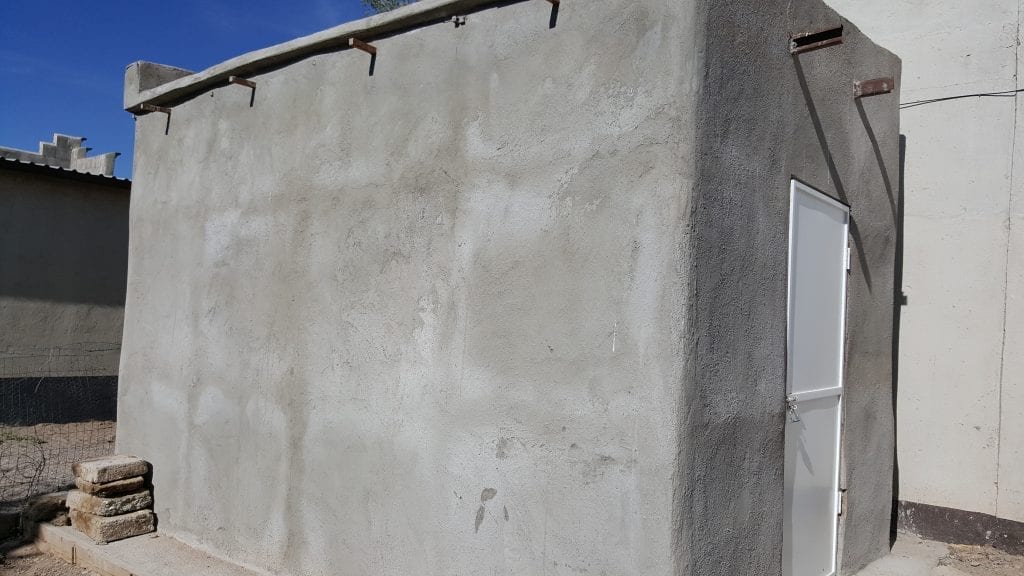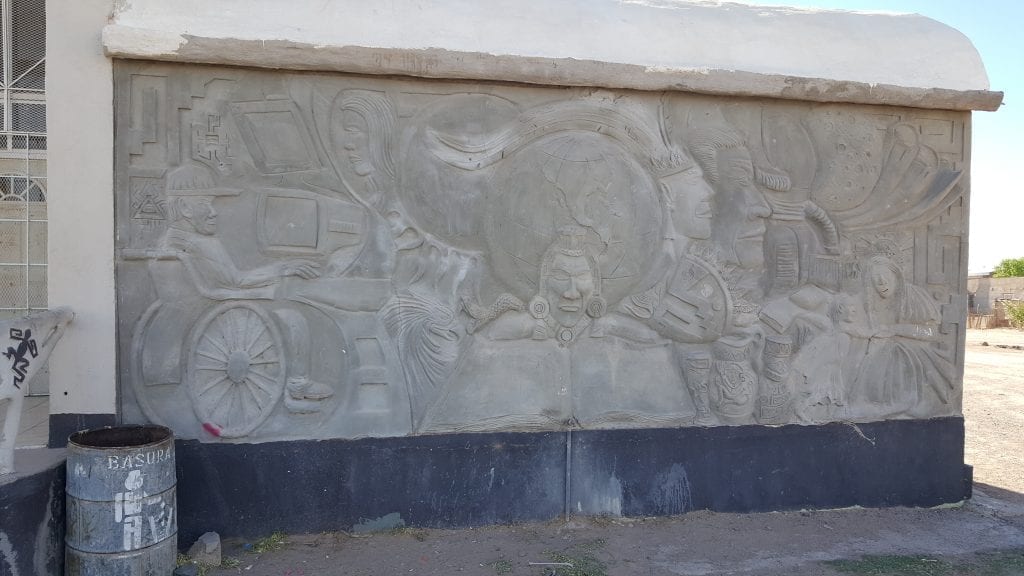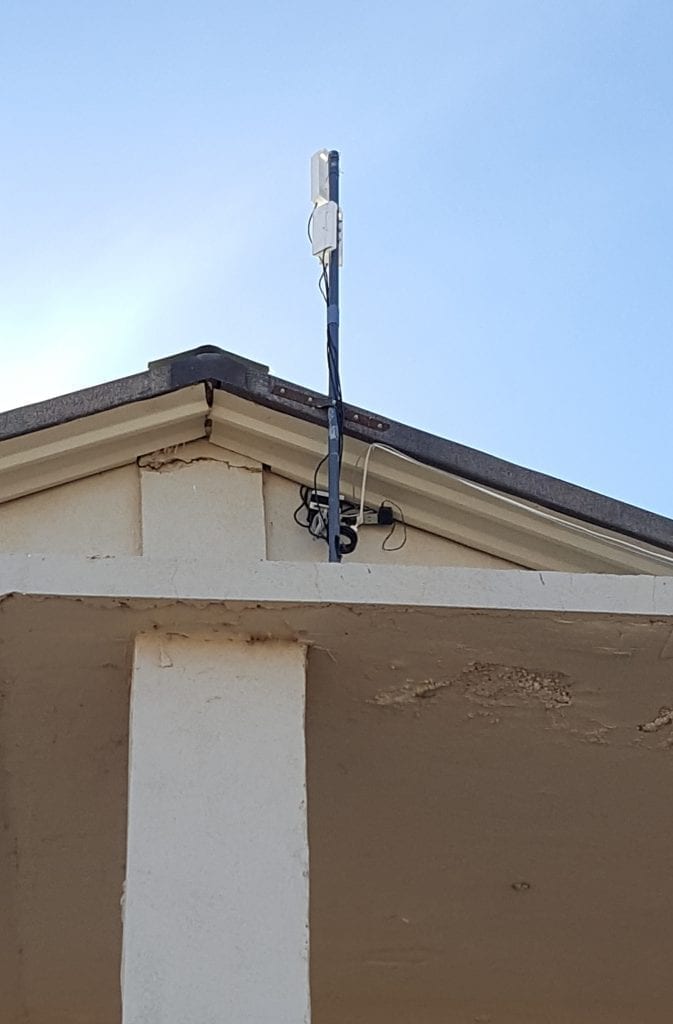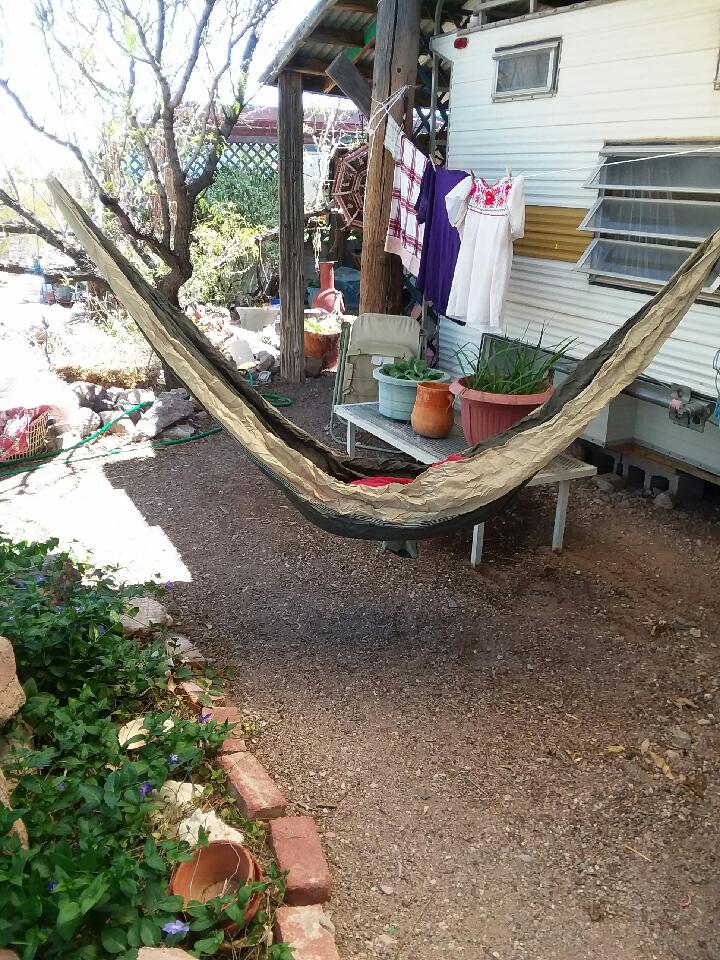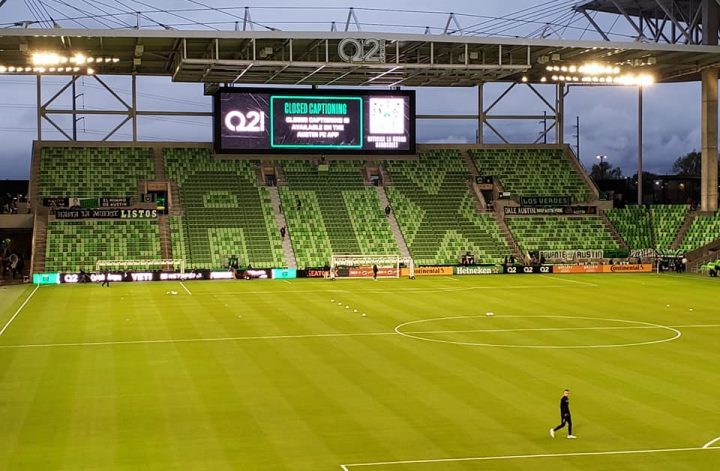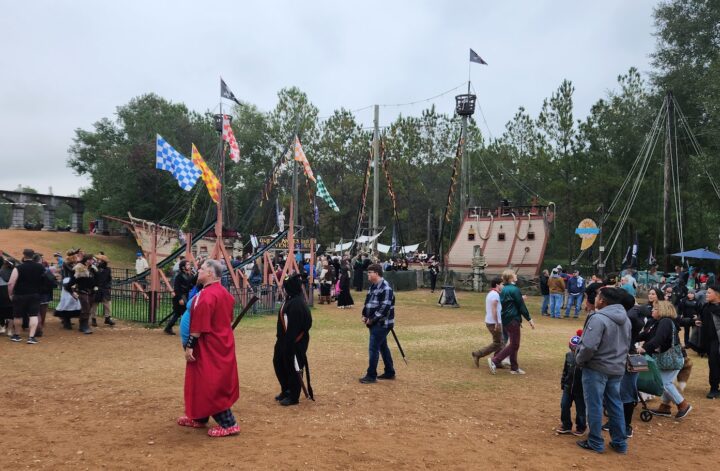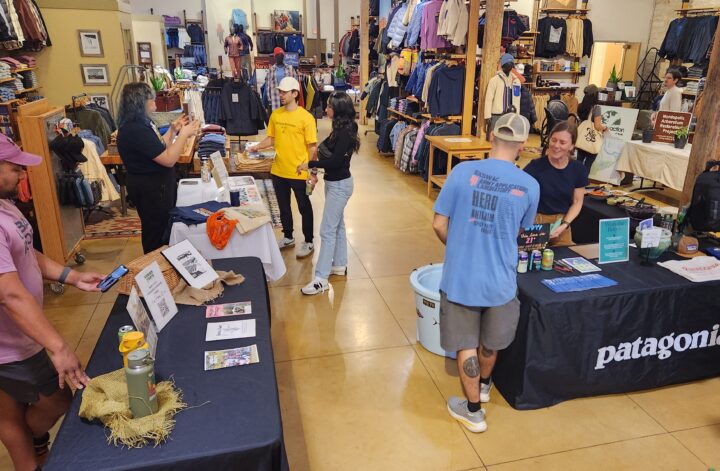City of the Sun Pt. 1 & Mexico Bike Adventure – Summary:
- Who: Sheila Bjeletich; Juan Rascon
- What: Left the state of Arizona; Arrived at City of the Sun in Columbus, New Mexico; Biked across the Mexico border into Palomas to visit a host family and nonprofit; Biked back across the US border after the Mexico tour
- When: Saturday, April 7
- Where: Columbus, NM; Palomas, MX
Quick Resources:
- City of the Sun FIC Profile
- City of the Sun Facebook Page
- COS – Tiny House Talk Article
- Columbus New Mexico Webpage – COS Articles
- City of Palomas Mexico Webpage
- Border Partners Webpage
My Route:
Planning my Eco-Inspired Road Trip Blog Post
My Travel Story:
Leaving Arizona, I spent the day driving through the desert into New Mexico on my way to the City of the Sun in Columbus, New Mexico, with the aim of getting there in the middle of the afternoon so we could go into Mexico and checkout the nonprofit projects my host was involved with.
I arrived at the City of the Sun, which initially looked like a mobile home park up front – but as I drove towards the back of the community, there were less manufactured mobile homes and more alternative architecture structures, tiny homes and creative compounds.
“City of the Sun, an intentional community of 200 acres North of the village of Columbus NM on the Mexican border is soliciting new members. COS was established almost 40 years ago. The land is arid desert surrounded by several small mountain ranges. The economy in the area is fairly depressed so prospective members are encouraged to have independent incomes such as retirement or skills that can be applied via internet etc..
Each member is entitled to up to 2 large lots. Most of the structures are owner built and include numerous tiny houses. Alternative building techniques have always been encouraged and there are quite a few structures made out of papercrete and adobe.” — Tiny House Talk Article
I pulled up into the trailer compound of my hostess, Shelia Bjeletich, and was greeted with exuberant energy. Not long after, she told me we were going to head into Palomas, Mexico and I should get my bike off my car – it was at this point I realized I had no idea what I got myself into.
This is the side entrance to Shelia’s hand-built trailer complex, surrounded by gardens and raised grow beds.
An interior look at the courtyard of her complex between the two trailers and covered storage areas.
Shelia’s personal kitchen is in this trailer, and she is standing in front of her covered bicycle storage area.
This is a view of the other side of the courtyard, which transitions into desert landscape further away from the complex.
Sheila is an avid community activist and hardcore cyclist, but recently tore a muscle in her leg – so she got her electric bike and we headed toward Palomas – officially making this an international road trip.
We biked through Columbus, NM, and stopped along the highway as Shelia pointed out a ranch out off in the distance where Pancho Villa supposedly used as his hide out when he recruited men for the border raids, and the Battle of Columbus and massacre in 1916 during WWI.
We biked against the wind about 4 miles to the Mexican border, where we cut through the Columbus New Mexico Port of Entry construction area that was expanding the border buffer zone further back into the state. On our ride in, we also came across a cross memorial in honor of those who died while trying to cross into the US.
This cross is a memorial to all of the immigrants than attempted to cross the border, but died along the way – “[In 2017] 412 migrant deaths were recorded on either side of the border, up from 398 a year earlier, with 16 recorded so far in 2018.” — The Guardian Article (2/6/18)
We easily rode in through the border entrance on our bikes into Palomas, and then biked around past the bars and stores, cartel houses and firebombed homes, past the baseball field and outdoor BBQs, riding through packs of wild Chihuahuas towards the home of Juan Rascon – the Mexician-side Coordinator of the Nonprofit – Border Partners.
We entered their home and I met his family, their little dogs, and many other people visiting like ‘Biochar Bill.’
After visiting, we drove over to the local community center, with a library and community gardens. This is also where I got to see papercrete in person for the first time. Compared to concrete bricks, papercrete has nearly the same structural integrity but twice the insulated properties and a quarter of the weight – so they could be thrown around like footballs.
This is the community garden tool shed built primarily from papercrete, and also has a rainwater catchment cistern on the corner!
This was a small garden right behind the papercrete tool shed that this man tended. While my Spanish skills couldn’t understand his accent, I did pick-up on a few of the vegetable names he listed in his garden!
We rounded the corner of the community center and came on the two hoop houses that contained the community garden produce. One of the issues they have with distributing the greens is the cultural diet of rice, beans, meat and little to no greens, which was an obstacle for the gardens.
On the far corner of the community center was the public library.
“In January 2012, Peter Edmunds began Border Partners’ most ambitious building project with papercrete. Hiring five local youth interested in learning construction skills to assist, Peter designed and built an addition to the local library which now serves as an Education Center, complete with 30 computers and internet.” – Border Partners Webpage.
The library’s technology annex was built with a vault roof, which was a first attempt by the builders after researching online how to build it.
The mural on the library wall represents various aspects of Border Partner’s goals tied in with the native culture and symbolic depictions.
The organization collected used/refurbished computers from the US and donated them to the library’s annex.
The Wi-Fi was also upgraded and an antenna was placed on the roof to boost the free signal within the local community.
Once we finished up at the community center, we stopped by the local market to pick up food and ingredients for dinner.
That evening, Juan’s wife Vicky, cooked us home-made empanadas and made us her neighborhood famous Clamatos. I really enjoyed the empanadas, not so much the clamatos, which figures because they are like a Bloody Mary.

I was pretty anxious to leave after dinner and the clamatos because I didn’t want to ride across the border and up the highway back to Columbus before it got dark. So we hoped on our bikes and rode through Palomas to the border checkpoint. Luckily we were on bikes, so we easily cut to the front of the line and did a bad check and were then on our way.
The sun was nearing the horizon as we were riding back. We were somehow pedaling into the wind on our way back into the US. My main concerns were not getting hit by cars blinded by the sun, running over broken beer bottles and sharp rocks, and keeping up with Sheila on her electric bike because I was exhausted.
Once we made it back to the city of Columbus, we took side streets to avoid the main highway traffic. As we were about to reach the street that connected us to the City of the Sun, a lone pitbull-looking dog roaming the street stopped and started coming toward us. Sheila told me to keep on biking and that she’d catch up. I saw her take her bike lock chain off her bike and then she started swinging it like Indiana Jones and his whip, and she charged the dog. Initially, the dog charged at her, but her shouts and swinging the chain scared it off further down the road. Meanwhile I was pedaling in low gear across the highway to the entrance of the community – we had finally made it.
After we made it back to Sheila’s compound, I strung up my hammock and tried to go to sleep. However, in a nearby neighborhood, there was a fiesta blaring reggaeton and mariachi music, and a couple of people were shooting pistols late into the night – so going to sleep was pretty hard.

